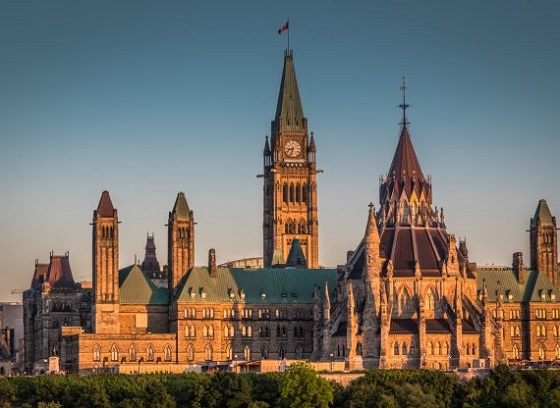Alberta
Kenney’s Leadership Review is a Circus – Red Deer South UCP MLA Jason Stephan

This opinion editorial submitted by Red Deer South MLA Jason Stephan
Alberta’s legislature begins with a daily prayer asking leaders to “never lead the province wrongly through love of power”.
Our political system does require reform, concentrating too much power in the hands of the Premier.
Other than elections, leadership reviews are vital checks and balances against autocratic ambitions. It is a serious matter to meddle with the few checks and balances for the public that remain.
The UCP leadership review has become a spectacle and a circus.
Fundamentally moving goalposts, after deadlines, destroys trust and integrity of process. It provides opportunities to cheat.
The party executive first chose a process that suppressed member participation. Many grassroots members and CA boards raised concerns about this, which the executive ignored and rejected.
Many are concluding the leader was losing his vote, under his preferred rules, so he metaphorically grabbed the ball and ran away.
Many are concluding these fundamental changes in process, after deadlines, seek to manipulate the outcome of the vote.
Many do not trust this new process has not, or will not, be rigged.
Last week I stood in the legislature and said:
“Some politicians label those who agree with them as the mainstream; while those who disagree with them as fringe minorities, extremists, or threats undermining stability.”
Kenney is doing what he condemned Trudeau for doing.
“Some politicians say of course we can have unity – if only you would agree with me!
That is not unity. That is ridiculous.
We are governed by laws, not by individuals, and our paramount loyalties are to principles, not office holders.”
Kenney says those who vote to change him as leader undermine unity and stability.
That is self-serving. “Stability” was also used by Trudeau as a self-serving excuse to justify his pact with the NDP.
Some politicians say vote for Kenney or there will be divisions in the party!
They are too late – divisions are upon us and sometimes this leader has increased, rather than decreased, them.
We have seen too much dividing, too much labelling, sometimes change in leadership is required to heal, to unite and move forward.
Some politicians say vote for Kenney, we cannot risk the NDP getting back in!
Albertans are tired of politicians using fear as a tool.
Conservative policies, regardless of the leader, increase economic prosperity. With oil over $100, a conservative government budget would be balanced, with or without Kenney.
The ends do not justify the means and so this leader does not enjoy the trust of most Albertans. This recent development only amplifies and reinforces those feelings.
Kenney is less popular than the party. Is it in the best interests of our party, our province, to go into an election hoping to win, in spite of the leader? Isn’t that too much to risk, as we cannot risk the NDP getting back in!
Some politicians say vote for Kenney, we need him to get Alberta a fair deal! What has he accomplished so far? If he is not fair, where his moral authority to demand Ottawa to be fair?
With Trudeau forming an axis with the NDP, we do need to prepare ourselves for the real possibility of further hostile, targeted attacks that harm Alberta businesses and families.
The Premier of Alberta needs to be respected and trusted by Albertans to fearlessly defend our interests. The current Premier does not have that.
Some politicians say vote for Kenney or you get someone worse!
More fear. To assume that any one person is the only one who could be the leader of our party is a false assumption.
There are many honest and principled Alberta men and women who would be great leaders of our party.
Politics should not be a career. It is a special opportunity to serve and having contributed one’s experiences and talents, one should step aside and allow others to do the same.
The Premier’s leadership, and now his unprecedented efforts to full out campaign and control the results of his own review have become a circus, a distraction, and a liability to the province and the party.
Confidence is lost, and for the good of the party, for the province, the Premier should be gracious, resign and support a positive leadership race for a new leader to unite the party and the province.
“Dividing and labelling others only produces contention and destroys trust.
That is not leadership.”
This is true.
“Great leaders lead in love and inspire the best in those they serve.”
This is what we need.
Alberta
Alberta government should create flat 8% personal and business income tax rate in Alberta

From the Fraser Institute
By Tegan Hill
If the Smith government reversed the 2015 personal income tax rate increases and instituted a flat 8 per cent tax rate, it would help restore Alberta’s position as one of the lowest tax jurisdictions in North America
Over the past decade, Alberta has gone from one of the most competitive tax jurisdictions in North America to one of the least competitive. And while the Smith government has promised to create a new 8 per cent tax bracket on personal income below $60,000, it simply isn’t enough to restore Alberta’s tax competitiveness. Instead, the government should institute a flat 8 per cent personal and business income tax rate.
Back in 2014, Alberta had a single 10 per cent personal and business income tax rate. As a result, it had the lowest top combined (federal and provincial/state) personal income tax rate and business income tax rate in North America. This was a powerful advantage that made Alberta an attractive place to start a business, work and invest.
In 2015, however, the provincial NDP government replaced the single personal income tax rate of 10 percent with a five-bracket system including a top rate of 15 per cent, so today Alberta has the 10th-highest personal income tax rate in North America. The government also increased Alberta’s 10 per cent business income tax rate to 12 per cent (although in 2019 the Kenney government began reducing the rate to today’s 8 per cent).
If the Smith government reversed the 2015 personal income tax rate increases and instituted a flat 8 per cent tax rate, it would help restore Alberta’s position as one of the lowest tax jurisdictions in North America, all while saving Alberta taxpayers $1,573 (on average) annually.
And a truly integrated flat tax system would not only apply a uniform tax 8 per cent rate to all sources of income (including personal and business), it would eliminate tax credits, deductions and exemptions, which reduce the cost of investments in certain areas, increasing the relative cost of investment in others. As a result, resources may go to areas where they are not most productive, leading to a less efficient allocation of resources than if these tax incentives did not exist.
Put differently, tax incentives can artificially change the relative attractiveness of goods and services leading to sub-optimal allocation. A flat tax system would not only improve tax efficiency by reducing these tax-based economic distortions, it would also reduce administration costs (expenses incurred by governments due to tax collection and enforcement regulations) and compliance costs (expenses incurred by individuals and businesses to comply with tax regulations).
Finally, a flat tax system would also help avoid negative incentives that come with a progressive marginal tax system. Currently, Albertans are taxed at higher rates as their income increases, which can discourage additional work, savings and investment. A flat tax system would maintain “progressivity” as the proportion of taxes paid would still increase with income, but minimize the disincentive to work more and earn more (increasing savings and investment) because Albertans would face the same tax rate regardless of how their income increases. In sum, flat tax systems encourage stronger economic growth, higher tax revenues and a more robust economy.
To stimulate strong economic growth and leave more money in the pockets of Albertans, the Smith government should go beyond its current commitment to create a new tax bracket on income under $60,000 and institute a flat 8 per cent personal and business income tax rate.
Author:
Alberta
Province to stop municipalities overcharging on utility bills

Making utility bills more affordableAlberta’s government is taking action to protect Alberta’s ratepayers by introducing legislation to lower and stabilize local access fees. Affordability is a top priority for Alberta’s government, with the cost of utilities being a large focus. By introducing legislation to help reduce the cost of utility bills, the government is continuing to follow through on its commitment to make life more affordable for Albertans. This is in addition to the new short-term measures to prevent spikes in electricity prices and will help ensure long-term affordability for Albertans’ basic household expenses.
Local access fees are functioning as a regressive municipal tax that consumers pay on their utility bills. It is unacceptable for municipalities to be raking in hundreds of millions in surplus revenue off the backs of Alberta’s ratepayers and cause their utility bills to be unpredictable costs by tying their fees to a variable rate. Calgarians paid $240 in local access fees on average in 2023, compared to the $75 on average in Edmonton, thanks to Calgary’s formula relying on a variable rate. This led to $186 million more in fees being collected by the City of Calgary than expected.
To protect Alberta’s ratepayers, the Government of Alberta is introducing the Utilities Affordability Statutes Amendment Act, 2024. If passed, this legislation would promote long-term affordability and predictability for utility bills by prohibiting the use of variable rates when calculating municipalities’ local access fees. Variable rates are highly volatile, which results in wildly fluctuating electricity bills. When municipalities use this rate to calculate their local access fees, it results in higher bills for Albertans and less certainty in families’ budgets. These proposed changes would standardize how municipal fees are calculated across the province, and align with most municipalities’ current formulas.
If passed, the Utilities Affordability Statutes Amendment Act, 2024 would prevent municipalities from attempting to take advantage of Alberta’s ratepayers in the future. It would amend sections of the Electric Utilities Act and Gas Utilities Act to ensure that the Alberta Utilities Commission has stronger regulatory oversight on how these municipal fees are calculated and applied, ensuring Alberta ratepayer’s best interests are protected.
If passed, this legislation would also amend sections of the Alberta Utilities Commission Act, the Electric Utilities Act, Government Organizations Act and the Regulated Rate Option Stability Act to replace the terms “Regulated Rate Option”, “RRO”, and “Regulated Rate Provider” with “Rate of Last Resort” and “Rate of Last Resort Provider” as applicable. Quick facts
Related information |
-

 Freedom Convoy21 hours ago
Freedom Convoy21 hours agoOttawa spent “excessive” $2.2 million fighting Emergencies Act challenge
-

 COVID-1918 hours ago
COVID-1918 hours agoWHO Official Admits the Truth About Passports
-

 Alberta14 hours ago
Alberta14 hours agoProvince to stop municipalities overcharging on utility bills
-

 Brownstone Institute2 days ago
Brownstone Institute2 days agoIs the Overton Window Real, Imagined, or Constructed?
-

 Frontier Centre for Public Policy1 day ago
Frontier Centre for Public Policy1 day agoThe tale of two teachers
-

 Business24 hours ago
Business24 hours agoMaxime Bernier warns Canadians of Trudeau’s plan to implement WEF global tax regime
-

 Alberta23 hours ago
Alberta23 hours agoAlberta moves to protect Edmonton park from Trudeau government’s ‘diversity’ plan
-

 Bruce Dowbiggin23 hours ago
Bruce Dowbiggin23 hours agoCoyotes Ugly: The Sad Obsession Of Gary Bettman








